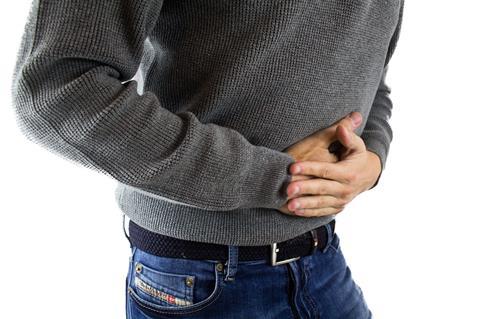Working with human stem cells that form a kind of ’mini intestine-in-a-dish’, Johns Hopkins Medicine scientists say they have found several molecular mechanisms for COVID-19-related diarrhea, suggesting potential ways to control it.

Details of the experiments in a model of human intestinal tissue, called enteroids, are described on July 30 in Cellular and Molecular Gastroenterology and Hepatology.
READ MORE: New study highlights scale and impact of long COVID
Along with the unpleasant aches, fever, sore throat, cough, respiratory distress and other symptoms that may accompany COVID-19 infection, up to half of people who get the virus will experience diarrhea. Some 30% of them will go on to develop long COVID, a persistent infection marked by debilitating symptoms, including chronic pain, brain fog, shortness of breath, chest pain and intense fatigue.
Predicting long Covid
“While COVID-19 diarrhea is not life-threatening like cholera, it can often predict a severe case and also who gets the long covid syndrome,” says Mark Donowitz, M.D., Emeritus Professor of Medicine and Physiology at the Johns Hopkins University School of Medicine.
Some aspects of COVID-19 diarrhea have been determined, including that ACE2, an enzyme to which the virus attaches, and TMPRSS2, an enzyme that allows the virus to enter cells, are present in the intestine. Until now, the mechanisms were not understood, and this research creates a more complete picture of the mechanisms that could lead to potential treatments.
In an effort to determine the mechanism by which COVID-19 diarrhea occurred, Donowitz and his team used a model of normal human intestines called enteroids. Formed by stimulating human stem cells to develop into many of the cells lining the intestine, enteroids form a single layer of cells in a petri dish oriented in the same direction as the normal intestine.
Changes in protein expression
The research team exposed the enteroids to live SARS-CoV-2 virus and saw changes in the gut cells’ protein expression and function.
In typical diarrhea caused by bacterial infections, viruses or medication side effects, there are changes in transport proteins that move molecules across cell membranes. These changes inhibit sodium and chloride absorption and produce chloride secretion. In COVID-19 diarrhea, both effects occurred, which is common in diarrheal diseases. Donowitz says that, unlike many diarrheal diseases in which the protein that is the basis of cystic fibrosis is activated, a different class of proteins, called calcium-activated chloride channels, were involved in the chloride secretion in COVID-19 diarrhea.
Combination of mechanisms
An unusual aspect of COVID-19 diarrhea was that, while many diarrheal diseases are caused either by direct effects on the transport proteins or by the accompanying inflammation, Donowitz and his team saw a combination of the two in the enteroid cells.
The researchers suggest that the inflammation linked to COVID-19 diarrhea may be similar to the inflammatory effects of COVID-19 in the lungs and other parts of the body. This suggests that testing the role of inhibitors of this response may be a way to treat COVID-19 diarrhea.
“The precise mechanisms of long COVID are a big mystery, although we now know that the virus can persist in the intestine for a long time,” Donowitz says. “The next big question is to determine what exactly allows the virus to live in the intestine and what allows the virus to live over a long period of time.”
This research was supported in part by the Johns Hopkins University School of Medicine Dean Durso Award and the National Institutes of Health National Institute of Diabetes and Digestive and Kidney Diseases (RO1 DK26523, RO1 DK116352; P30DK089502).
Other authors include Chung-Ming Tse, Rafiq Sarker, Ruxian Lin, Tyrus Vong, G. McNamara, Varsha Singh, Chenxu Guo, Shang JuiTsai, Andrew Karaba, Andrea Cox, Steven Gould, Olga Kovbasnjuk and Nicholas C. Zachos of Johns Hopkins Medicine, Jaiprasath Sachithanandhan and Andy Pekosz of the Johns Hopkins Bloomberg School of Public Health, Karol Dokladny, Manmeet Rawat, Julie In, Alison Kell, and Steven Bradfute of the University of New Mexico Health Sciences Center, and Ivy Horwitz and ChunYan Ye of the University of New Mexico Center for Global Health.







No comments yet